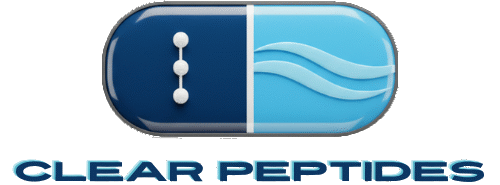GHK-CU Copper Peptide Research: What Studies Reveal About Tissue Repair
GHK-CU (Glycyl-L-Histidyl-L-Lysine Copper) is a naturally occurring tripeptide that has been a subject of scientific inquiry for decades. Found in human plasma, saliva, and urine, its levels are highest in young, healthy individuals, where it plays a critical role in a wide range of biological processes, including tissue regeneration and wound healing. Unlike the pharmaceutical peptides discussed previously, GHK-CU operates as a natural signaling molecule, acting as a cellular conductor rather than a single-target receptor agonist.
Mechanism of Action: A Cellular Conductor
The primary function of GHK-CU is its ability to bind copper ions, thereby facilitating their transport and enhancing the function of various enzymes that rely on copper. This copper-binding activity is central to its effects on tissue repair and remodeling. The peptide orchestrates the synthesis and breakdown of key components of the extracellular matrix (ECM), such as collagen, elastin, and glycosaminoglycans. It also modulates the activity of metalloproteinases, which are enzymes crucial for breaking down damaged proteins and remodeling tissue. This balanced regulation of synthesis and breakdown helps maintain optimal tissue balance and function.
Wound Healing and Tissue Repair Research
Extensive preclinical research has documented GHK-CU’s impressive wound-healing and tissue-repairing abilities. Studies have shown that GHK-CU stimulates blood vessel and nerve outgrowth, which is essential for proper tissue recovery. Research has also demonstrated its ability to accelerate the healing of wounds in various tissues, including the skin, liver, stomach lining, and lung connective tissue. An in vitro study, for example, found that GHK-CU treatment helped restore function to lung fibroblasts from patients with chronic obstructive pulmonary disease (COPD) and even reversed gene expression changes associated with the condition. This suggests that the peptide may have a regenerative effect on aged or damaged cells, not just a reparative one.
Applications, Limitations, and Regulatory Status
GHK-CU is widely used in topical skincare products for its purported anti-aging and skin-regenerating properties. However, the vast majority of research supporting its benefits is based on animal or in vitro models. There is a notable absence of large-scale, placebo-controlled human clinical trials to establish standardized dosing, efficacy, and safety for systemic use. Additionally, research notes that GHK-CU can be broken down by certain enzymes found in “wound serum,” such as in diabetic skin ulcers, which can render it ineffective in specific contexts. This highlights a key limitation in its therapeutic application.
Works Cited
secretmedspa.com, accessed September 23, 2025, https://secretmedspa.com/peptides-for-wellness/ghk-cu/#:~:text=GHK%2DCu%20(Glycyl%2DL,%2C%20and%20anti%2Dinflammatory%20processes.
Regenerative and Protective Actions of the GHK-Cu Peptide in the Light of the New Gene Data, accessed September 23, 2025, https://pmc.ncbi.nlm.nih.gov/articles/PMC6073405/
GHK Peptide as a Natural Modulator of Multiple Cellular Pathways in Skin Regeneration, accessed September 23, 2025, https://pmc.ncbi.nlm.nih.gov/articles/PMC4508379/
What is the role of copper peptide in wound healing and skin …, accessed September 23, 2025, https://www.droracle.ai/articles/301906/copper-peptide
GHK-Cu Peptide | The benefits, side effects, and more [2025] – Innerbody Research, accessed September 23, 2025, https://www.innerbody.com/ghk-cu-peptide
Is taking Glycine-Histidine-Lysine-Copper (GHK-Cu) safe? – Dr.Oracle AI, accessed September 23, 2025, https://www.droracle.ai/articles/287679/is-taking-ghkcu-dangerous

